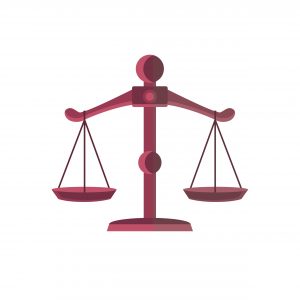Determining Fault for a Car Accident
 In order to make an injury claim for pain and suffering after a car accident, it is necessary to be able to prove that the accident was caused by someone else’s negligence. Establishing fault for an accident is necessary to get compensation for accident victims because whoever caused the accident is usually responsible to pay for damages. This article describes some of the issues considered by lawyers, insurance adjusters, and juries when deciding who caused a motor vehicle accident.
In order to make an injury claim for pain and suffering after a car accident, it is necessary to be able to prove that the accident was caused by someone else’s negligence. Establishing fault for an accident is necessary to get compensation for accident victims because whoever caused the accident is usually responsible to pay for damages. This article describes some of the issues considered by lawyers, insurance adjusters, and juries when deciding who caused a motor vehicle accident.
Distracted or Impaired Driving
Even a brief loss of concentration while driving can result in an accident. Texting and other smartphone usage are among the most common types of negligent driving behaviors. Impaired driving includes driving drunk or driving while using drugs. Driving when you are too tired to stay awake and alert is also impaired driving. Impaired driving causes some very serious accidents and injuries.
Fault can Often be Determined by Car Accident Damage
The type of damage and severity of damage often tells a story. Sometimes the fault is very clear and everyone agrees about what happened. There is seldom any doubt about whether or not a stop sign violation occurred and witnesses can often clear up any disputes about what the drivers say happened. Often drivers have very different accounts of what happened and we have to do a more detailed evaluation of what happened. In many of these cases, the physical configuration of the roadway or intersection, as well as the damage to the vehicles, can tell us what happened. Skid marks and debris on the road can tell where the collision occurred as well as provide information about the speed and direction of travel of the vehicles. Damage at the back of the car shows the vehicle was struck from behind.
I have dealt with many accidents involving a three-car pile-up with three cars traveling all going straight in one direction in the same lane. There are two possible ways that that could happen. There could be an initial collision between the front car and the middle car followed by another collision between the rear vehicle and the middle vehicle. That is what insurance companies would usually like to say happened if you were in the middle vehicle. Another possibility is that the middle car was struck and pushed into the front car. A larger amount of damage at the back of the middle vehicle and the front of the rear vehicle as compared to the damage at the front of the middle vehicle and the back of the front vehicle would be likely if the rear vehicle started the chain reaction. Also, witness statements including the driver or passengers of the front vehicle can be important. If the front vehicle felt two collisions or one collision is then the question. In addition to witnesses, most cars less than about ten years old have computers that record information about the movement of vehicles before an accident. It requires special technical skill to recover information from cars and interpret it. This is one of the ways that accident reconstruction specialists can play a very important role in determining fault. Your own car can become an important and impartial witness.
Other Information can be derived from physical damage to the vehicles
The damage can show where the vehicles were and help prove who was at fault. For example, if an accident when a car made a right turn out of a parking lot in front of a vehicle approaching from the left, the driver’s side of the at-fault vehicle would be damaged and the front of the other vehicle would be damaged. If one driver was turning left at an intersection in front of oncoming traffic the front or right side of the left turning vehicle would be damaged and the front or left side of the vehicle that was traveling straight would be damaged. Accident reconstruction specialists use information such as weather conditions, the weight of the vehicles involved and skid mark measurements to determine things such as the speed and direction of travel of the vehicles.
Other things considered when determining fault
- The condition of the vehicles including brakes, tires, headlights brake lights and signal lights.
- Witness statements
- Weather conditions
- Road conditions including construction and visual obstructions
- Tire marks
Videos are becoming increasingly important. Many cities have continuous video recordings of major intersections. Also, most businesses have video recordings. If you can see what actually happened in a video, it clears up most questions.

